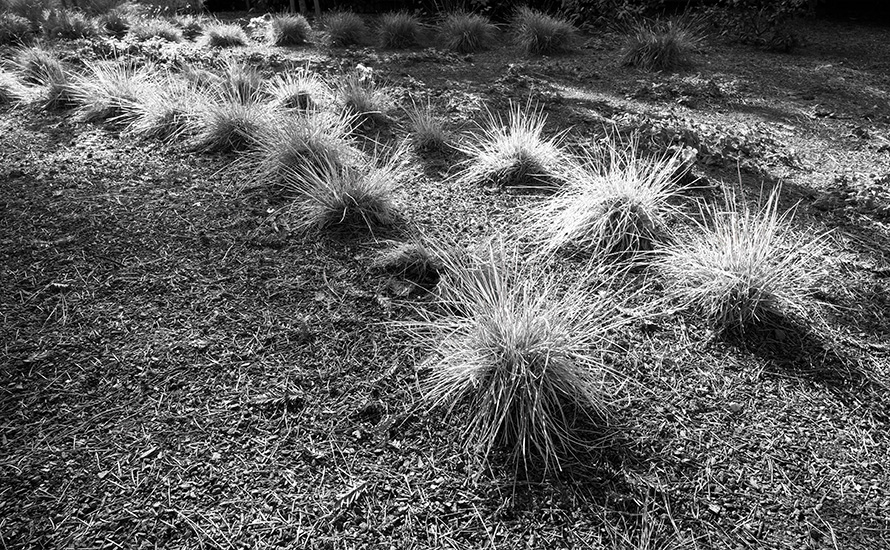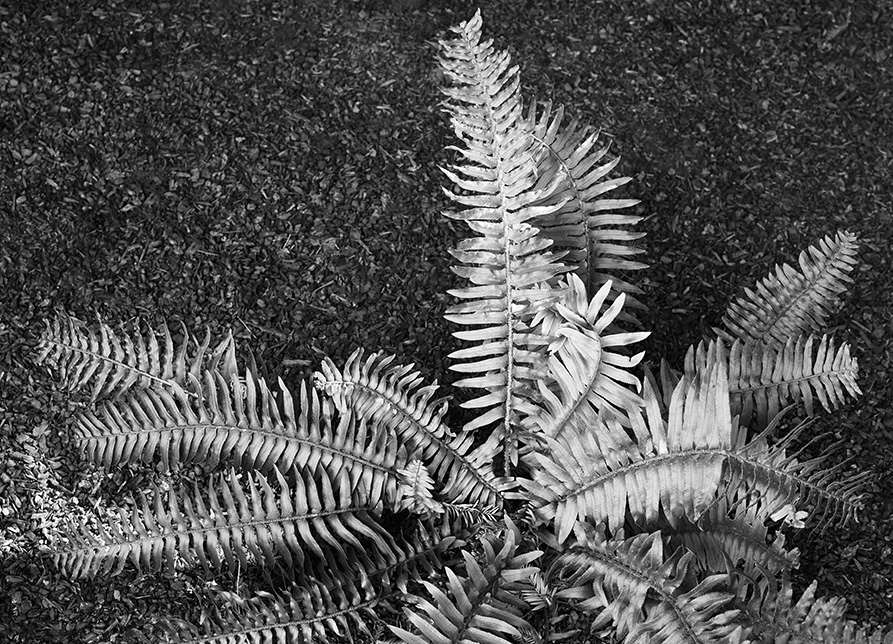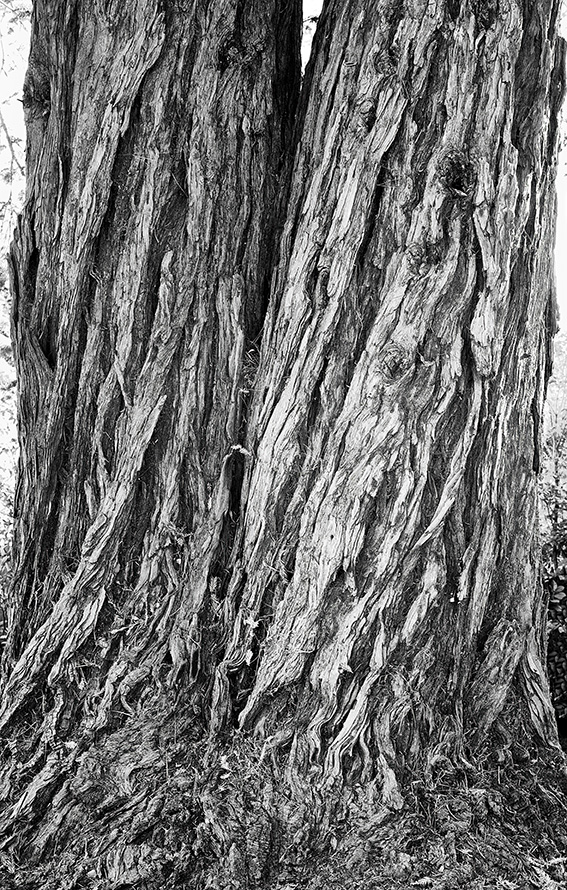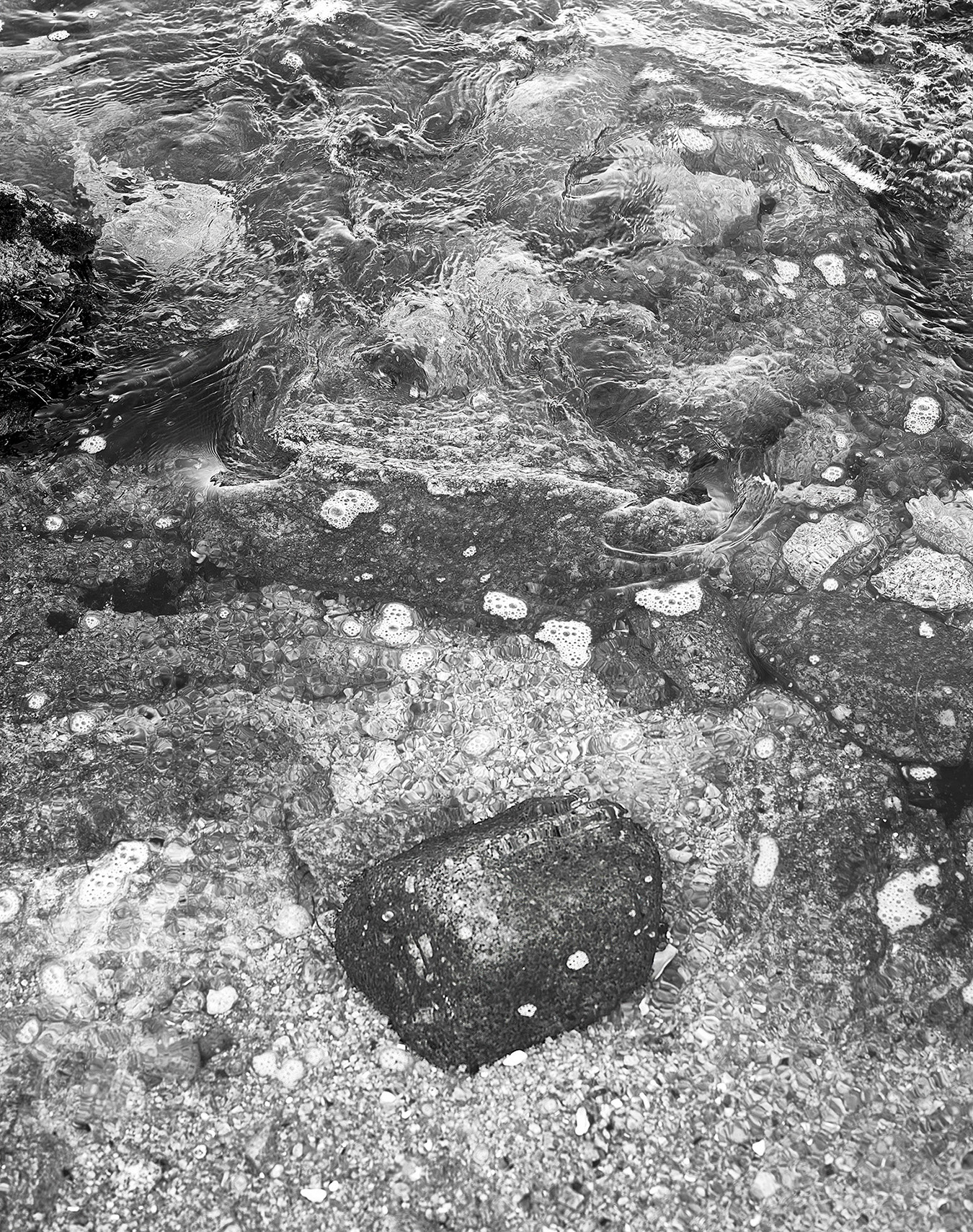Introduction
After more than three decades of shooting exclusively in color, I decided to revisit Black and White. I also decided to go back to a simple small camera that I can use handheld.
For me, this feels like going back to basics.
Let me explain:
My love for photography began in the darkroom the first time I saw someone develop a print. I was 9 yers old.
I volunteered to help in that darkroom every chance I had and always enjoyed every minute of it. I learned to develop film, use an enlarger and expose and develop prints properly several years before I made my first exposure.
Four years had passed since that first experience when I was finally able to borrow a camera and start shooting. The camera was a Kodak Brownie.
I could not bear the idea of someone else developing or printing my work. So I started to develop film and make 2 1/4 inch contact prints at night in the garage of my parents house. My light source for exposing the paper was a light bulb with a chain light switch.
I have always considered developing (editing in the digital world) and printing one’s own work an integral part of the creative process. This is why I am still doing it today.
By the time I was 15, I borrowed my first 35 mm camera. It was an Exakta Varex IIB that belonged to one of my uncles.
I read voraciously about photography and dreamed for years about someday owning a Leica, but the price was so out of reach, I felt I was not likely to ever own one.
Instead, I started saving money for a Nikon. After I finished College, at age 21, I purchased my first Nikon; a venerable Nikon F.

Magical Grasses.
Leica M 10 Monochrom with 21 mm Super Elmar ASPH
What happened then?
That is a good question!
Essentially what happened was that I was never quite satisfied with my work. I thought it was partially my own fault for not being as good as I wanted to be, but I also knew there was something else. I was extremely frustrated because I couldn’t figure out what the “something else” was, let alone what to do about it….
The Big Move
It was time for me to leave my country of birth and come to the United States to attend Graduate School. While working on my Ph.D. in Physics, I was lucky enough to have after hours access to a lab in the Physics Department that had filtered and temperature controlled water and air.
Having access to such a lab, the temptation to try to develop color materials was irresistible, so I bought a basic enlarger and a set of acetate color filters and I started to do color work.
As hard as it was to do it completely manually in those days, I had a huge sense of accomplishment making my own color prints completely by hand in trays in total darkness.
My work got a lot better (in my estimation), but something was still missing and I could still not tell what the underlying issue was.
And then……..I went to see an exhibit by Edward Weston. That single event changed my life. I could not believe the impact of those gorgeous contact prints from 8×10 inch negatives. I finally found what I was looking for in my work, and I finally discovered what was causing my frustration and disappointment. More importantly, I now knew how to solve the problem. Hurrah!
After looking at those magnificent prints from 8×10 inch negatives, it dawned on me that the underlying issue that was bothering me for years was the inherent image quality of the 35 mm format.
I had never thought of the fact that the 35 mm format was designed to be small and nimble, with the aim that the final product would be a picture in a magazine or a newspaper. Given the low resolution and small size of the final product, 35 mm film and equipment was more than adequate for the task, but the inherent quality of the format was significantly sub-standard for the kind of fine art prints I wanted to achieve.
So I returned to Black and White and started working with large format view cameras, first a 4×5 inch camera and eventually an 8×10 inch camera.

Portrait.
Leica M 10 Monochrom with 75 mm APO Summicron ASPH
Fast Forward to Today
By now, you have probably surmised that I worked in Large Format Black and White for a while, but I was still intrigued by color. After a decade and a half of working only in Black and White, I switched to Large Format color work.
I continued using Large Format film until 4×5 digital scanning backs and subsequently Medium Format digital cameras matched or exceeded the quality of Large format Film.
I absolutely love Medium Format digital photography. If one chooses the right equipment, the build quality, ergonomics and functionality is beyond anything I could have imagined a few decades ago. But more importantly, the image quality is fantastic. With the right camera, digital back, lenses and editing software, it exceeds the quality of Large Format film photography by a significant margin.
The Threat of Boring or Deteriorating Work
I find that in order to stay at the top of my game and not become stale, or start deteriorating as a photographer, I need a periodic “kick in the butt”: A significant change…A new motivator…
I believe all artists go through this process with a certain regularity.
I was going through one of these periods recently and doing some thinking about my images moving forward.
I was particularly concerned with the constant difficulty of traveling by air with photographic equipment, plus the fact that travel has become either very risky or banned to many places because of COVID.
I was also concerned about the difficulty of landscape photography in a grossly overpopulated world. There are few places left that are not either already spoiled or overrun by visitors or both.
So the idea that popped into my mind was to go back to basics and shoot with much more nimble equipment so I could move faster when needed, carry less and be able to hike farther and be quicker in order to avoid other people.
As I kept thinking about this, the idea to re-program my brain to see images in black and white again and to go back to focusing my attention mostly on tonality, detail, texture and composition seemed to complete the “kick in the butt” I needed.
One of my key concerns, however, was whether I could find smaller more nimble tools that I would enjoy using and would have good enough image quality to satisfy my minimum quality requirements.

The Fern.
Leica M 10 Monochrom with 50 mm APO Summicron ASPH; shot at ISO 10,000
Enter the Leica M Monochrom
In the past, I have purchased a number of 35 mm cameras from all the well known Japanese and German brands. Unfortunately none of them ever became one of the tools I used. They basically sat in the closet, until I finally sold them.
While 35 mm DSLR’s can do a few things that one cannot do with Medium Format, such as shoot very fast distant action at extremely high frame rates with very long lenses, in general I found them to be pretty ugly, clunky, totally un-ergonomic and not particularly pleasing to use. And even with all the improvements in image quality over the years, I still found the files lacking in image quality.
I can say without hesitation that I have never owned a 35mm DSLR I liked. And trust me, that includes just about every brand and model for quite a few years.
More recently, I have tested several EVF cameras and I do not like any of them either.
I had used Leica M digital cameras in the past and as much as I enjoyed using them, I found them to be behind the times in terms of sensor resolution and still not up to the image quality standards I so crave for my work.
I tested one of the Leica M Monochrom cameras some years back and I thought it was an intriguing concept with much better image quality than the color versions, but I was not interested in black and white at that time.
Which brings me to the Leica M 10 Monochrom.
The new Leica M10 Monochrom really intrigued me because of two reasons:
1. The brand new B&W 40 Megapixel sensor.
2. The hope that the camera had been improved and refined versus the earlier Leica M digital cameras.
A short technical note is in order:
A Black and White only sensor exhibits much higher resolution and significantly lower noise than a color sensor with the same Megapixel count. This can be explained as follows:
In a color sensor, a filter of one of the three primary colors is needed in each sensing element (sensel), which lowers the amount of light reaching the sensel.
Because the amount of light reduction is different for each color, and because sensors have different sensitivity to different colors, best case at least two color channels need different levels of amplification so the signal can match the third. In some cases, all three colors are amplified for various reasons. When one amplifies a channel, the noise also gets amplified, so a color image has invariably more noise than a black and white image from the same or a similar sensor, and the noise produced by this amplification in general also has a color component.
In terms of an image in color, it takes several sensels to determine the color and the brightness of a small area.
By comparison, in B&W each sensel “reads” the image as opposed to several sensels needed to “read” each small area in color, so the image resolution of a B&W sensor is significantly higher.
Many use a rule of thumb that for example, a 40 Megapixel B&W sensor produces resolution somewhat better than a B&W conversion from a similar 80 Megapixel color sensor. In other words, at least a factor of 2X.
Finally, as indicated above, the B&W sensor also has lower noise.
In conclusion: The image quality of a B&W sensor is significantly better than that of a color sensor of similar construction and equal Megapixel count.
In Actual Use
Based on all the above criteria, I decided to purchase a Leica M10 Monochrom and use it for landscape images hand held.
As soon as I started using the camera, my brain kept repeating that (unlike earlier digital M cameras):
This time they nailed it!
The ergonomics and functionality are greatly improved. The precision and the fit and finish are legendary Leica quality all the way.
All the controls are well located, silky smooth and very precise. The rangefinder focusing mechanism is deadly accurate, the rear screen is excellent, the menus are logical and make sense (what a concept!), the camera is simplicity itself and at the same time has everything one needs, no more, no less…
The lenses are magnificent.
The understated all black “stealth” look is not only beautiful, but it allows the photographer to call a lot less attention to himself/herself.
But the most important thing is that the image quality is stunning for such a small compact tool. The sharpness, dynamic range, resolution, as well as the tonality that the camera delivers are all first class. The lack of noise in the images surprised me; at ISO 10,000 the noise level is still extremely low, some might even call it barely perceptible.
This camera is a huge joy to use!
While some photographers addicted to autofocus find the Leica M to be a bit of an anachronism, I find the viewfinder and the rangefinder manual focusing refreshing and a joy to use. It makes me think, pre-visualize and plan the shot better. And it is deadly accurate when used by a skilled photographer.
And while the camera does have a few hereditary quirks from the past, such as the removable bottom plate to change batteries and memory cards, once you become proficient at using a Leica M, there is simply nothing else like it.
A good analogy I can think of is the Porsche 911. Both, the Leica M and the Porsche 911 are brilliant designs that are built to extremely high quality standards. Both products have been tweaked and improved continuously for roughly three quarters of a century. They both have some unique quirks because of this heritage. But anyone who is a proficient driver and has driven a Porsche 911 will tell you that there is simply nothing else like it. Likewise, anyone who is a skilled photographer and has used a Leica M will utter the exact same words about the Leica.

Redwood Trunk
Leica M 10 Monochrom with 50 mm APO Summicron M
-
What Does the Future Look Like?
- As a good friend of mine said to me once: “The future is not what it used to be”.
- Indeed, it is very hard to predict what the future will bring.
In terms of my photography, I am extremely glad that I decided to go back to basics. I am energized, excited about my work and I hope I am producing special images that look different from my prior work.
Am I giving up on color work? The short answer is no. Am I giving up on Medium Format? Again, the answer is a definite no.
The return to Black and White work and the choice of a Leica M are the exact “kick in the butt” I needed and working in this different medium with a totally different tool is not only helping me produce a new type of work, but it is also helping me evolve and elevate my Medium Format color work.
So for the foreseeable future I intend to add the Leica M to my tools and I intend to have days when I am shooting only B&W and days when I am shooting color.
Final Recommendation
If you have never done it before, look for a “kick in the butt” and try it
Highly recommended!






Your Thoughts